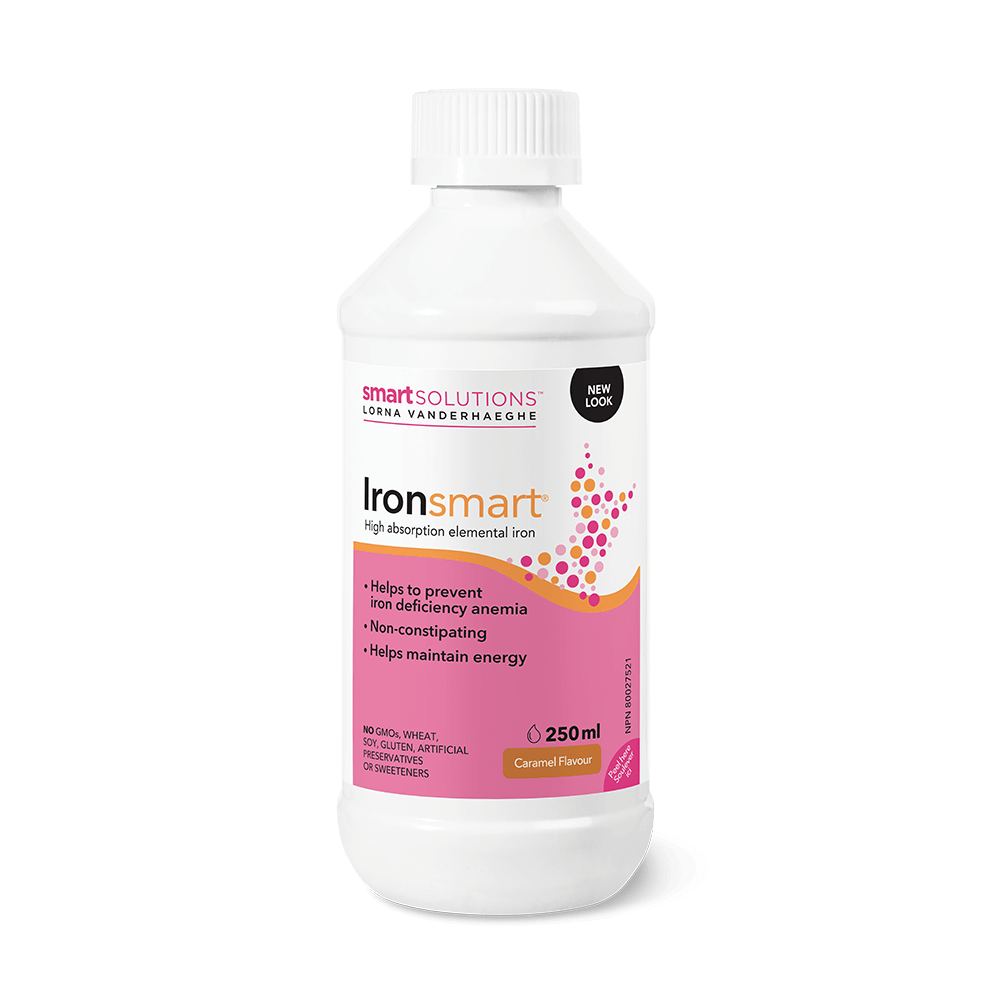Has your get-up-and-go gone away? Feeling sluggish is no joke, especially when it’s caused by iron deficiency. Approximately 4% of premenopausal women are iron deficient, and certain groups including children under age 2, adolescent and menstruating women as well as older adults are at greater risk of iron deficiency. During pregnancy, women need more iron to support increased maternal red blood cell requirements to supply the growing fetus, placenta, and developing brain. Needs also increase in the last trimester as the fetus builds iron stores that are meant to last for the first six months of life.
Essential info
Almost two-thirds of iron in the body is found in hemoglobin, which is the protein in red blood cells that ferries oxygen to tissues. Common problems with hemoglobin may be linked to iron deficiency that could be caused by insufficient dietary intake, poor absorption or through blood loss.
There is a direct relationship between our stored iron and the amount of an iron-containing protein called ferritin that is present in blood. As a result, low blood levels of ferritin indicate depleted iron stores and is the first stage of deficiency. Overt iron-deficiency anemia is the most severe form of deficiency and is associated not only with fatigue, but also breathing difficulties, impaired cognitive function, depression, loss of libido, menstrual problems, nausea, palpitations and risk of cardiac failure. If you have been diagnosed with iron deficiency anemia, there is much you can do to increase iron stores.
Pumping iron (into your body)
Adults require up to 20 mg of iron daily from food, but most get less than half of that amount. Dietary iron is delivered in heme and non-heme forms, which are absorbed by different pathways in the body. Heme is found only in fish, meat and poultry. It is the most easily assimilated form of iron and provides up to one third of the iron you absorb. On the other hand, most of the iron we eat comes in non-heme form and is available in eggs and plant-based foods, such as legumes, vegetables, fruit, grains, nuts, and fortified cereals.
Foods and supplements can positively and negatively impact the quality of our non-heme iron absorption. For example, polyphenols from tea and coffee, phytates in legumes, unrefined rice and grains, food sources of calcium including cheese, dairy and spinach should be eaten separately from iron sources as they can block absorption. You should also take calcium supplements or antacid tablets 1 hour before or 2 hours after iron. On the other hand, to boost absorption, take iron with food sources of vitamin C, such as a glass of orange juice, or tomatoes, strawberries or peppers. Using iron pots for cooking will also amplify your intake of iron.
Ironing out deficiencies
Supplementing with iron is critical for improving your reserves, but you want to be sure to use the most efficient form. Pay attention to the amount of elemental iron that supplements provide. Elemental iron refers to the total amount of iron in the supplement, but each type of iron provides a different percent of elemental iron. Tablets may contain binders and fillers, and may not absorb as easily as a liquid supplement would. Yet liquid supplements have been known to cause irritation, pain and cramping.
IronSmart
Fortunately, IronSmart liquid iron supplement takes advantage of technology that wraps the iron in a liposomal bubble that allows it to pass through the high acidity of the stomach and arrive in the small intestine for absorption. Research showed that absorption of the encapsulated iron pyrophosphate used in IronSmart is equal to ferrous fumarate but because of its revolutionary delivery system, IronSmart iron does not cause the stomach upset and constipation associated with other iron supplements. The liposomal delivery system also means you don’t have to take it with food. IronSmart’s delicious caramel flavour is in a gluten-free, vegan-friendly, non-constipating formula that quickly raises both hemoglobin and ferritin.
IronSmart helps to prevent and treat iron deficiency anemia so you don’t have feel like you are out-of-gas.

Do you know the signs of low iron?
- Dizziness
- Fatigue
- Headache
- Pale skin and fingernails
- Palpitations
- Weakness
Talk to your health care provider.
